A Failure to Communicate – Interlude
Thanks to Mike Gartland and John Morrow, The Kirby Effect is offering Mike’s “A Failure To Communicate” series from The Jack Kirby Collector. Captions on the illustrations are written by John Morrow. – Rand
Interlude was first published in TwoMorrows’ April 2000 Jack Kirby Collector 28.
While others write about Kirby’s influence in this issue, I’d like to discuss some of the contributions of the one professional who influenced Kirby in a myriad of ways, and quite arguably brought him towards his greatest recognition: Stan Lee.
Well, think about it; although Stan may not have been an influence to Jack in the artistic or storytelling sense, his effect on Kirby’s work at Marvel, for good or bad, is present in virtually every issue of every title Jack worked on. The majority of the effects were obviously good, as reflected in the love we share for their combined work.
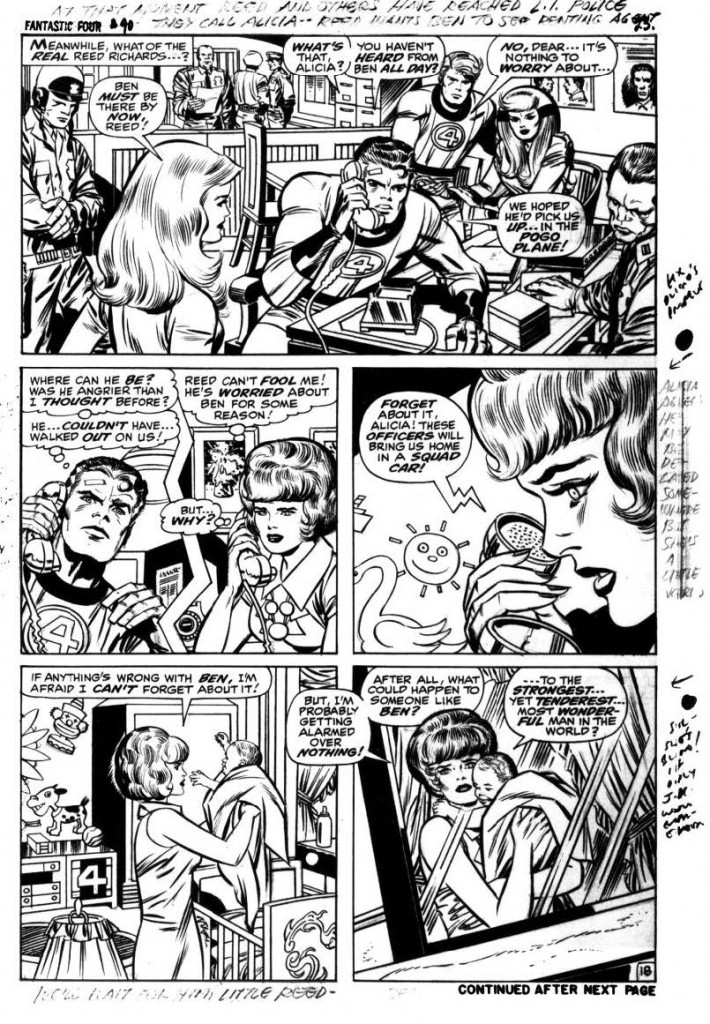
A good catch (and a little venting of frustration) by Stan on this FF #90 page. His notes to Sol Brodsky about the way Jack drew Alicia’s eyes: “Fix Alicia’s pupils, Sol — She’s blind! If only J.K. were consistent.”
Although many throughout fandom speculate that Jack was the concept or “ideas” man behind the “House of Ideas,” it must be noted, however true, that Stan was the one asking for those concepts and ideas, especially during those critical early years. Stan is therefore rightly recognized as the father of the Marvel Universe, being a seminal influence behind not only Jack, but all areas of production. Stan was a creative midwife, periodically provoking Jack to bear down and push. This is not to say that Stan didn’t have ideas of his own, but one of his strengths was knowing how to utilize the creative talents of others. Stan’s input into the creation of Marvel’s earliest and most famous characters should not be disputed.
When Goodman wanted to start up a super-hero line again, he went to Lee and Lee went to Kirby—not anyone else at Marvel— to come up with a book. Many cite the similarities between the FF and Jack’s Challengers and use this hypothesis to say that most of the idea for the FF came from Jack, but Lee’s influence is obvious from the two most colorful characters, the Torch and the Thing. It’s a pretty safe bet to assume that Stan would want a monster-like character, in keeping with the then-popular line of monster-related books that they were putting out. The inclusion of the Torch was definitely Lee’s input; it was all Jack could do to keep Stan from bringing back other Golden Age heroes for that book, and convince him to go with new characters. Stan still showed his love of the old guard by reviving the Sub-Mariner, and giving the “new” Torch his own title as soon as he could.
Bringing back old characters was not to Stan’s detriment; if not for him, we of the Baby Boomers would never have enjoyed the likes of the Torch, Namor, or ironically Cap. Jack, being progressively creative, almost certainly wouldn’t have gone into the past and saved these great characters. Thanks to Stan reviving him, Captain America is more popular and recognized today than he ever would’ve been had he remained buried among the WWII relics. Also thanks to his reprinting of Golden Age stories early on, Stan became the first to re-introduce a new generation to the works of Simon & Kirby, Carl Burgos, and especially Bill Everett.
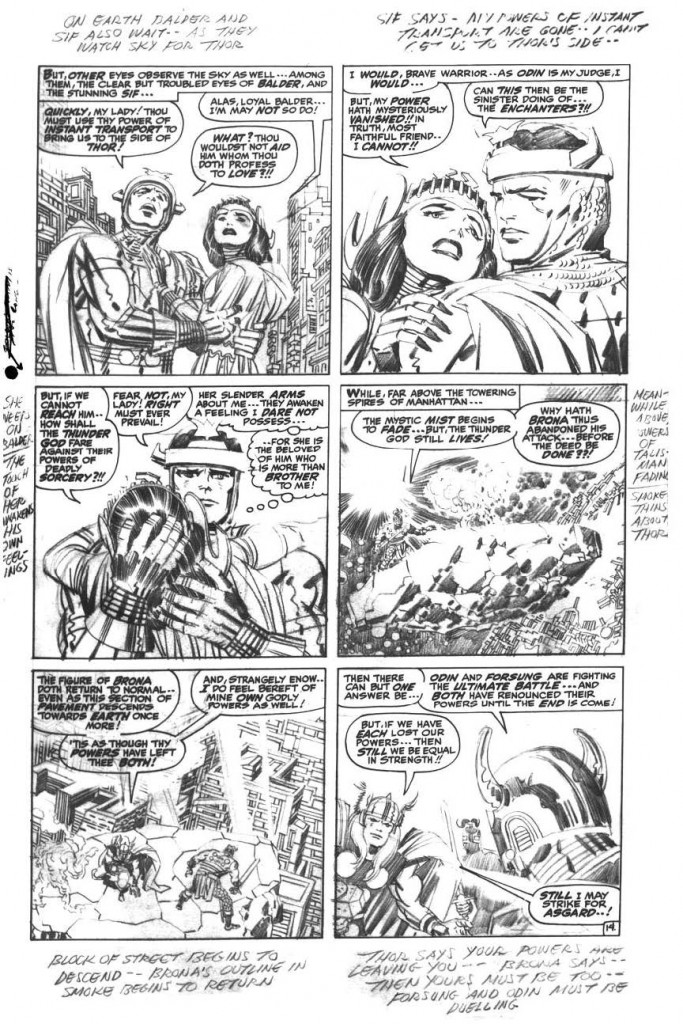
Page 14 pencils from Thor #144. It appears Jack came up with the somewhat out-of-character subplot of Balder being secretly in love with Sif. Stan went along with it for that issue, but wisely never followed up on it.
The Hulk, Thor, and Spider-Man were the next triumvirate that Kirby came to co-develop when Stan asked Jack for ideas. As with the Thing, Stan most likely asked for a character like the Hulk. In earlier pre-hero Marvel stories, every now and then a monster would make a re-appearance, perhaps in response to fans or positive sales. Based on this, Stan may have wanted to try a series with the same monster in the lead; but maybe it came too late. The Hulk was pretty obvious as far as a monster tie-in was concerned, and maybe this was one of the reasons that initially, he didn’t succeed. There were a lot of monster stories already ingested by Marvel readers and, compared to books like FF and Thor, the Hulk was just another monster, not super-hero, book. Thor was discussed previously; Jack’s love of mythology fed this title for years, with Stan’s humanistic take on gods giving it the vitality to keep going.
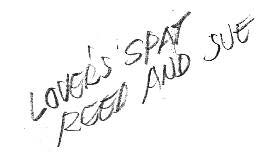
Jack jotted this down on the back of one of his statted pages from FF #46. Was it a note taken during a phone plotting session with Stan, or Jack’s own idea for a subplot?
Ironically it is Spider-Man, Jack’s failed concept, that becomes Stan’s magnum opus and Marvel’s greatest success. Spider-Man, more than any other character, is a testament to the control that Stan had in the development of Marvel’s heroes. Stan may not have developed these characters artistically, but he knew what he wanted, and none of them would exist as they do today if not for his influence and input. And no, I didn’t forget Ant-Man, but he also was discussed in a previous issue; I also didn’t forget that one should never mention the development of Spider-Man without acknowledging the immense input and talent of Steve Ditko. (As an interesting footnote, the rejected Spider-Man origin, where a kid finds an object that gives him his powers, may have been re-vamped and used in the origin for Thor, showing how close in time these two characters were being developed by Jack & Stan.)
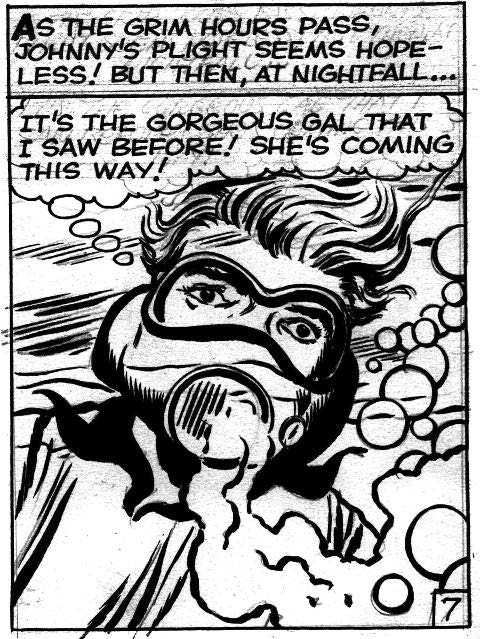
As reported in the letter column of TJKC 27, Jack’s handwritten dialogue is visible in the balloons (not the margins) of the original art from Strange Tales #103, leaving the question of whether Kirby, Lee, or Lieber wrote the original dialogue for this story.
You would not have seen FF #12 or Spider-Man #1 as they exist today if not for Stan. Well, so what, you ask? The same could be said for any Marvel issue at that time. What I’m trying to point out here is not only Stan’s influence on the finished product, but the initialization of cross-marketing the characters between titles. This laid down the basis for a definitive point of reference between the characters’ individual plots in their own titles, interwoven occasionally with the other books, backed up with references in current books to previously published “back issue” stories; thus establishing a “timeline” that all of the super-hero books followed. All of this is known today as “continuity.” Stan established it, it tied the Marvel Universe together, it was wonderful, and boy, does the current Marvel ever need it today.
Stan was able to maintain all of this continuity because he not only plotted and wrote some of the various stories, but was editor as well. Unlike DC’s method of several editors to oversee their titles, Stan was the sole editor for anything produced at Marvel. He was able to stay on top of the expanse of titles due to his acceptance of the “Marvel method” of writing, whereby the artist became a collaborator in the development of the story. This method of writing was established when Kirby returned Marvel in the late ’50s, but was cemented in as the recognized standard procedure once the super-hero line became established, and due to the adaptability of the other talented artists at Marvel at that time—namely Ayers, Ditko, and Heck. Thanks to the Marvel method and an assist in scripting from his brother Larry, Stan was free of the tedious and lengthy task of writing full scripts, while at the same time allowing his staff to interject fresh ideas into sometimes timeworn plots.
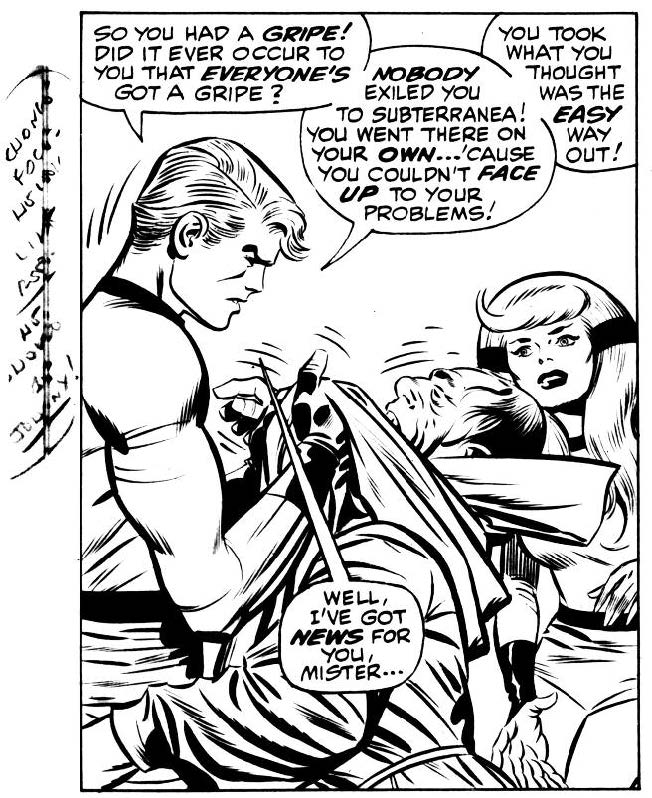
Another example of Stan’s important influence as an editor: This panel from FF #89 features a Romita face on the Human Torch. The reason is clear from Stan’s note: “Change face–he looks like Reed–he should be Johnny!”
The Marvel method became a proving ground for artists seeking a new approach to their work. Some could or would not work this way; others adapted readily and are recognized today as the unsung storytellers at Marvel. After Stan’s “fantastic four” of Kirby, Ditko, Ayers, and Heck, artists like Romita, Buscema, Sinnott, Severin, Everett, Colan, Roth, Tuska, and Trimpe became stalwarts to Marvel fans everywhere. Along with editing plots, scripts, and dialogue, Stan edited the art as well. For someone who wasn’t an artist, he became respected by many who were for his acumen on how to render a story for the greatest impact on the reader. A big tip of the hat must be given to Sol Brodsky as well, who handled many of the production and editing assignments when Stan became swamped; truly a man who deserves more recognition than he receives.
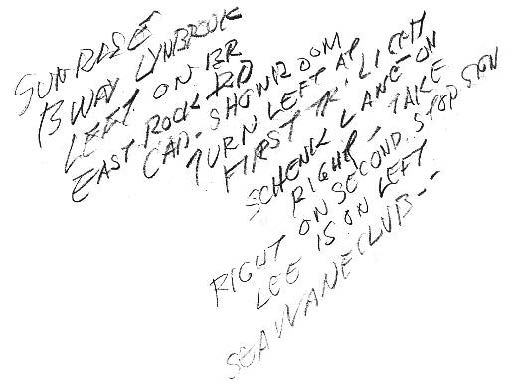
Holy Marvel Minutiae! The back of another FF #46 stat shows Kirby’s handwritten directions to what looks to be a lunch meeting with Stan. Does anyone know if the Sewane Club still exists?
This leads to another of Stan’s attributes: Rather than a company of seasoned professionals who dealt with their patrons accordingly, Lee acknowledged that Marvel was a “nuthouse,” filled with zanies doing their darndest to satisfy you, the fan, and enticing you to be a part of it. To this extent he debuted “the Bullpen,” a bunch of flawed humanity that was usually making mistakes, generally having a good time, and always open to suggestion. Stan, in listing credits and establishing a page devoted to the goings-on at the Bullpen, introduced the reader to virtually everyone who worked at Marvel at one time or another. Even the office workers and staff were mentioned in the books; to this day fans seek out Flo Steinberg. Readers might never have known that draftsmen like John Severin, Paul Reinman, Chic Stone, George Roussos, and Joe Sinnott worked at Marvel had Stan not given a credit line to inkers, something never done on a regular basis anywhere; and giving credit to letterers was unheard of, but what Silver Age Marvel fan doesn’t know who Artie Simek or Sam Rosen were? As a matter of fact, some of Stan’s funniest writings were at his letterers’ expense. Stan would generally have the letterer be the butt of an alliterative list of quips, after introducing himself, the artist, and the inker; and what gives the humor an ironic twist is that the letterer would be forced to letter in the quip. It was all in good fun.
Now before you go writing off your letters about these things existing in previous companies like Fawcett, EC, or DC, I’m not saying that Stan was the first to do such things, but to his credit he did them in such a way, and expanded upon them to such an extent, that fans everywhere attribute continuity, letters pages, a bullpen, credits, and crossovers to Marvel.
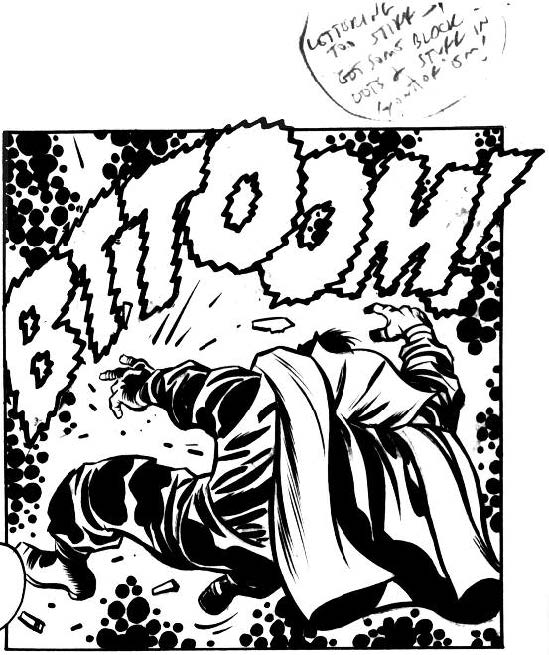
Stan even paid close attention to lettering. This FF #89 panel includes STan’s note to Sol Brodsky: “Lettering too stiff–Get some black dots and stuff in… (rest is illegible).”
This is perhaps Stan’s greatest talent: To take something done previously and give it his own twist, thereby enlivening it to appear fresh and innovative. Stan was vitality incarnate; this permeated each and every book. He showed it to you, made you believe in it, and want to share in it. Stan gleaned the best from other publishers and through irreverence and humor, made you think that it could only come from Marvel.
But what, do you ask, was his influence on Kirby? Simply put, Stan was both the ignition and brakes to the creative engine that was Jack Kirby. Stan could both feed ideas to, and take plots from Jack, turn Jack loose and then clean up the excess, saving what was needed for publication. If there was too much good material in one story, Stan would have Jack stretch it out or save it for future use. Kirby’s creativity had to be properly controlled or his plots, concepts, and characters would run roughshod over each other, becoming jumbled, smothered, or forgotten. Jack needed a strong editor, which is why many cite his best work as coming from his relationships with Stan and Joe Simon. Although Jack’s Fourth World storylines are excellent in their conception and design, it would’ve flowed better had he employed such an editor, in my opinion. Stan managed to keep Jack’s stories from becoming disconcerting.
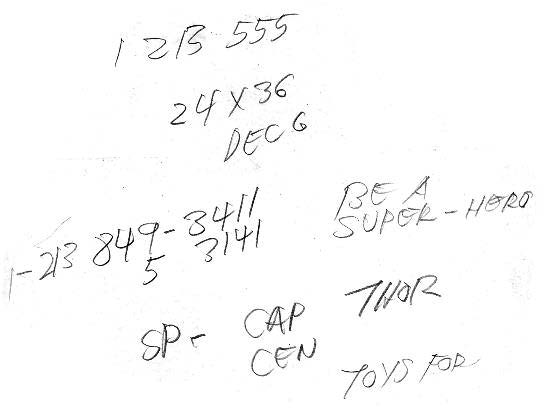
Jack appears to be jotting down notes for his Toys For Tots poster during a phone call with Stan. This was on the back of stats from Thor #152.
That last word can be used in that context, but that brings me to another of Stan’s talents: A word that you don’t see everyday, or may have to look up; the use of words, the turning of a phrase, the allocation of alliteration; in short, this guy could write. No one before or since has ever dialogued comics like Stan. His use of colorful, melodramatic flowing phrase sent fans by the ton scurrying for their dictionaries and thesauruses; and I’m not only talking about ten-year-olds, but college kids as well. How many of us were indirectly introduced to the great writers of yesteryear because, unknown to us, Stan would paraphrase their works into his stories; remember “Oh Wasp, Where Is Thy Sting?” (Tales To Astonish #69)? What a catchy title; camp, but catchy; but I notice it still sticks in my brain after 30+ years.
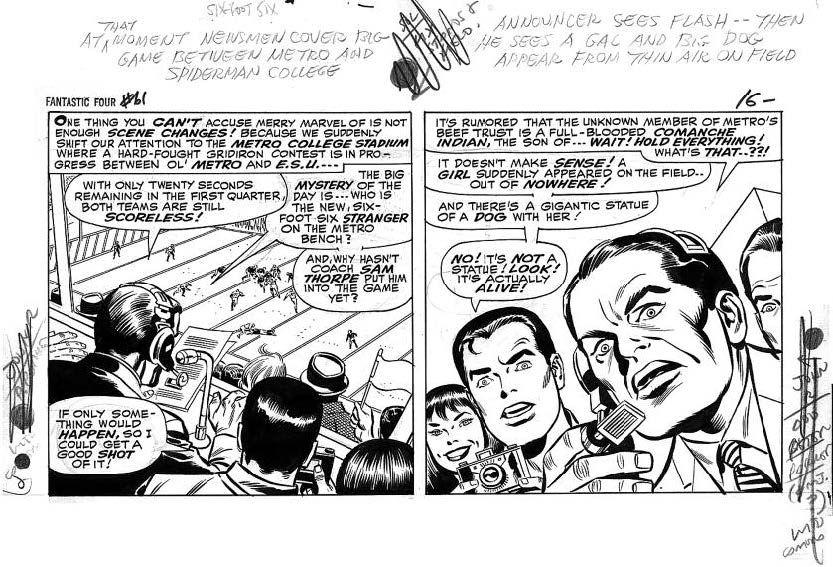
These panels from FF #61 show numerous Lee notes for corrections, particularly to John Romita to redraw Peter Parker and Mary Jane Watson. Stan was extremely influential in maintaining a consistent look for the characters.
But camp was what the Sixties comics were all about, and Stan rode the crest till the end. He kept a keen eye on what was topical and never lost contact with the fans. He found out what was “in” and utilized it to sell the books; remember Marvel “Pop-Art” Productions? Although it was one of Stan’s attempts that didn’t catch on, he was always trying new venues and never stopped. He knew how to sell the product without looking like a corporate employee. Stan was hip, he was in; and this is why he is looked upon today by so many fans with reverence and respect. Stan grew up with us, was one of the first adults that seemed to understand us kids; he treated us with respect, made us feel like we were a part of something cool and happening. He is as much a beloved cultural icon to us as Rowan & Martin’s Laugh-In, Mickey Mantle, or Aurora models. The fortunate thing for us though, is that Stan’s still here, still fabricating, still bombastic, still alliterative, still humorous, still controversial, still Stan.


Did anyone ever answer John’s question about the driving directions? For the curious twelve years later, the directions are for Kirby to take the Sunrise Highway to Broadway in Lynbrook, then turn left onto East Rockaway Road, then turn onto Schnecks Lane, with his ultimate destination the Seawane Club at 1300 Club Drive, Hewlett Harbor, NY. Have a look at http://www.seawane.com to confirm it is indeed still in existence.
I followed it, too. And guess what? I believe that either Stan Lee or Martin Goodman lived on >ahem< Richards Lane right across the street from the Seawane Club. Will have to dig around to confirm.
http://goo.gl/maps/8FQ6
Yep, it was Stan, as noted on page 114 of TwoMorrows’ Stan Lee Universe.
Next to last line says: “Lee is on left”
Of course! Thanks, Alex.
Great seeing these online. I do take issue with this part of Mike’s article.
“as reflected in the love we share for their combined work”
The idea all (we) fans of Kirby share a love for “their combined work” simply isn’t accurate. Off the top of my head I could name quite a few people who actively dislike the Silver Age Marvel stories based on what Lee did to them once Kirby turned them over to Lee. Aside from the very obvious tampering with the plots as detailed by Mike in these articles, I find Lee stylistic mannerisms “grating” (“grating” copyright: Bob Heer).
His jokes are never funny, his characterizations flat and lifeless, and his editing so poor the stories as rewritten by Lee are often nearly incomprehensible in terms of logic. Based on my reading Lee is not even up to the level of an ordinary Gold or Silver age writer.
I think Kirby was producing great, great art during the ’60s, and he was brimming with ideas, it’s also evident by 1965 he had moved away from simple stories and was trying to introduce the kind of depth of thought found in his later material. Only the ghost of those ideas are in the room though after Lee was finished rewriting the stories. You can only sense “waves of thought present” http://whatifkirby.com/sites/default/files/comicpages/thor160_pg17_a.jpg?1316348892
So sure lots, and lots of people love the Marvel Silver Age, but there is no “we” and in my view the era is the most unfortunate thing which ever happened to Kirby. He got absolutely nothing out of it aside from his page rate for penciling, and there are a very large number of hugely negative things associated with the era. Kirby himself was very upfront about his feelings on these matters as far back to the ’60s.
Pat Ford writes:
“So sure lots, and lots of people love the Marvel Silver Age, but there is no “we” ”
Your very statement contradicts itself. The “lots and lots” ARE the “we”….
So to coin a phrase: yes Virginia there is a “we” and it’s known as the majority; of which you Pat , in this instance choose not to be. Everyone’s entitled to their opinion so enjoy yourself!
Regards,
Mike Gartland
Mike, Sorry as the magazine is called THE JACK KIRBY COLLECTOR I took the “we” in:
“as reflected in the love we share for their combined work”
as being the readers.
Stats of Kirby’s pencils from FF #61 have surfaced and Kirby didn’t draw Parker and Watson in the grandstand watching the football game. Kirby drew two incidental fans next to the announcer. Watson and Parker were ordered by Lee. A sort of product placement type advertising.